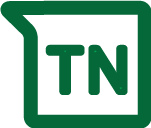Remember dial-up internet? That nostalgic screech of a 56kb connection trying its best to download a single movie overnight? Those were the days when patience wasn't just a virtue, it was a requirement for any Zimbabwean internet user. Fast forward through 3G era, where we celebrated waiting 'just a few hours' for downloads, and you'll appreciate why Liquid Home latest fibre speeds feel like science fiction made real.

In December, Liquid Home revolutionized Zimbabwe's internet landscape by upgrading their fiber packages. They now offer packages with speeds upto 1Gbps (1000Mbps). I have been using Liquid Home Fibre since 2020, on their $99 unlimited package. I've witnessed my connection transform from a respectable 20Mbps to a whopping 500Mbps. That's not just an upgrade, it's a quantum leap. But what does this mean for the average Zimbabwean user? Let's dive into my five-month experience with these new speeds.
The Hardware Reality Check
Before you get too excited about those blazing speeds, there's some hardware homework to do. Your experience with Liquid's upgraded service largely depends on three crucial factors:
The Router Gateway
That trusty old router might be holding you back. Most older routers supplied by Liquid Home support only up to 100Mbps for cable and 300Mbps for WiFi. To unlock the full potential of these new speeds, you'll need a router supporting 1Gbps and WiFi 6. Liquid offers an upgraded router for $89. Recent subscribers might already have the newer hardware.
WiFi Generation Matters
Here's where things get interesting. Your device's WiFi generation plays a crucial role in the speeds you'll actually experience, and this is something many Zimbabwean internet users overlook. Most devices in Zimbabwe range from WiFi 4 to WiFi 6. Let me break it down:
WiFi 4 (802.11n): This is still common in many older laptops and budget smartphones. While it promises speeds up to 300Mbps on paper, real-world performance typically maxes out around 150Mbps. If you're using a device with WiFi 4, you won't see those blazing 500Mbps - 1000Mbps speeds from Liquid's upgrade, even with the perfect router setup.
WiFi 5 (802.11ac): Found in most mid-range devices from the past few years, WiFi 5 can theoretically handle speeds up to 866Mbps. However, in typical home environments, you're more likely to see speeds between 200-400Mbps. This is still plenty fast for most uses, but won't quite hit Liquid's maximum potential.
WiFi 6 (802.11ax): This is the latest standard, present in high-end phones like the iPhone 13 and newer, Samsung S21 and up, and recent laptops. While it boasts theoretical speeds up to 1.2Gbps, real-world performance usually tops out around 500-600Mbps – perfect for Liquid's new speeds.
The Ethernet Advantage
For the speed demons among us, a direct Ethernet connection remains the most reliable path to maximum performance. But remember – your router needs to support 1Gbps Ethernet. If it's limited to 100Mbps, that's your speed ceiling, regardless of your package.
Real-World Performance
Over five months of testing on their $99 package, which maxes out at 500 Mbps, the results have been impressive, though they vary depending on connection method and time of day:
- WiFi Performance: Average speeds of 150 – 250 Mbps both for uploads and downloads
- Ethernet Connection: 300-400Mbps, with peak performance during night and early morning hours
- Typical Daytime Speeds: 150Mbps on WiFi, 300Mbps on Ethernet
- Upload Performance: Consistently reliable, managing 1GB files in under 10 minutes
The network handled seven connected devices without breaking a sweat. During my use there was never time the speed felt slow or congested.
How Does It Stack Up Against Competition?
In Harare's home internet market, Liquid's new speeds are unmatched:
- Starlink: Averages 150Mbps outside Harare, but lower in the capital due to congestion
- TelOne Fibre: Averages out at 50Mbps
- Utande Fiber: Tops at 30Mbps
- Econet 5G: Average speeds of 40Mbps
Do We Really Need These Speeds?
For basic browsing and streaming, Liquid Home previous speeds were already sufficient. Netflix won't load faster, and your Facebook feed won't scroll more smoothly. However, these upgrades are about future-proofing. As 8K video, virtual reality, cloud gaming, and massive file transfers become commonplace, Zimbabwe's internet infrastructure needs to be ready.
For businesses and educational institutions, these higher speeds are already essential. A 1Gbps connection can handle multiple users simultaneously, providing a much more robust solution than traditional 50Mbps links.
While we might be playing catch-up to markets like the US, where Google Fibre offers 8Gbps speeds, Liquid's upgrade represents a significant step forward for Zimbabwe's digital infrastructure. It's not just about speed, it's about preparing our nation for the next generation of digital innovation.
Join WhatsApp Channel
Stay up-to-date with the latest technology news and trends by joining our exclusive WhatsApp channel! Get instant access to breaking news, insightful articles
 TechNews
TechNews







Please login or create account to comment.